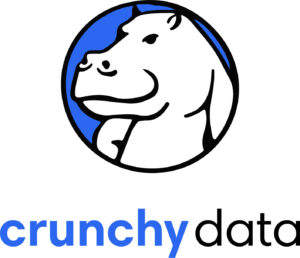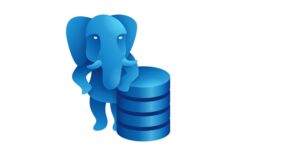
Crunchy Data
Monday brought the first surprise from Snowflake Summit 25: the acquisition of Crunchy Data for a reported $250 million. Crunchy Data is an established South Carolina company that has been running and building upon the open source Postgres database for well over a decade, so what prompted the $70-billion data giant to buy it now?
When the cool kids in IT were going gaga for Hadoop and NoSQL databases back in the early 2010s, Paul Laurence, the president and co-founder of Crunchy Data, had a different idea. While those other technologies had their backers and successes, Laurence was focused on another emerging trend–one that also involved enthusiasm for the potential for open source, but without all the rule-breaking that Hadoop and NoSQL entailed.
“They were making a bet on a new open-source data management toolbox, where they had these NoSQL databases. That was part of where they were going,” Laurence told BigDATAwire in a July 2024 interview. “But they also saw this as an opportunity to shift towards open source on the relational and SQL side. And they had evaluated the landscape and selected Postgres as kind of their big bet.”
Laurence also decided to make a bet on Postgres in 2012, when he co-founded Crunchy Data in Charleston, South Carolina with his father, Bob. Over the years, the company launched a range of Postgres-based offerings, including a supported distribution of the database called Crunchy Postgres, a version of Postgres to run on Kubernetes containers, a cloud-hosted version called Crunchy Bridge, and finally an analytics version called Crunchy Bridge for Analytics.
By the time 2024 rolled around, Crunchy Data had built a solid business with 100 employees and 500 customers. All of its products are 100% compatible with Postgres, a guarantee that is critical for the company’s customers as well as the fuel that drives the continued growth of Postgres. The bet on a boring piece of relational tech created by Michael Stonebraker 35 years ago had paid off, which is a small miracle in the hype-driven echo chamber of IT.
“Postgres was largely dismissed when we first started. It was really all about Hadoop and MongoDB,” Laurence told us. “It was very contrarian at the time…Other folks would say ‘You guys are crazy. What are you guys doing starting a SQL database company? SQL is dead. That’s not a real thing anymore.’”
Snowflake Finds a Postgres
You wouldn’t mistake Snowflake for being a big fan of Hadoop or NoSQL, either. In fact, the company’s success is based in no small part on the wave of Hadoop failures in the late 2010s.
“I can’t find a happy Hadoop customer. It’s sort of as simple as that,” Bob Muglia, the former CEO of Snowflake, told this publication back in March 2017. “It’s very clear to me, technologically, that it’s not the technology base the world will be built on going forward.”
Muglia, of course, was right: Hadoop would go on to implode in early June 2019, thereby paving the way for the rise of cloud-based data warehouses and lakehouses, including Snowflake. Just over a year later, amid the COVID-19 pandemic, Snowflake famously went public as the “largest ever” software IPO ever.
Since then, Snowflake has been in a neck-and-neck race with Databricks to develop the industry’s preeminent cloud data platform. Databricks, of course, is the company behind Apache Spark, which also contributed to the decline of the Hadoop stack. While Spark is still there, it’s just a part of what Databricks does anymore.
Like its rival, Snowflake has also been moving away from where it started. While Snowflake has adopted newer analytics architectures for its RDMBS, including MPP-style column store and separation of compute and storage, under the covers, Snowflake’s big bet has been on traditional SQL and relational technologies.
Snowflake’s big awakening under new CEO Sridhar Ramaswamy has been the importance of openness and a shift away from proprietary tech. That’s what drove it last year to embrace Apache Iceberg, the open source table format that solved a bunch of the consistency issues that arose with Hadoop’s buffet-style data access patterns.
The support for Iceberg tables as an alternative to Snowflake’s traditional tables also opened up the door for Snowflake customers to bring an array of alternative query engines to bear on Snowflake data, including open source Trino, Presto, Dremio, Spark, and Apache Flink, among others.
Now with the acquisition of Crunchy Data, Snowflake has an entire open source database on offer. Snowflake Postgres, as the new offering is called, brings customers all the open goodness of Postgres and its massive ecosystem.
So what changed? Why is Snowflake doing this now?
What Changed at Snowflake
What changed is agentic AI emerged on the scene, and Snowflake sensed that customers would not be happy using its proprietary relational Snowflake database to handle this emerging workload.
While Snowflake’s database is powerful and capable, the company is not about to open it up and allow customers to modify the database to handle these emerging agentic AI workloads in the same manner that they could with an open source database–that they could with Postgres.
Snowflake EVP Christian Kleinerman addressed the reasons behind the acquisition of Crunchy Data during a question and answer session with the press on Monday at Snowflake Summit 25.
“I think first and foremost, it confirms our commitment to interoperability and then customer choice,” Kleinerman said. “I think open source is a little bit less important. But what matters with Postgres is not whether it’s open source or not. What matters is there’s a very large community of people that value Postgres built for Postgres, build on top of Postgres.
“That’s what drove us,” he continued. “That was the requirement for many of the customers and partners that we heard, which is we like a lot of the technology you build, but it would make it way easier for us to bring computation, to bring applications, to even bring agents onto the data if you have something that is Postgres compatible.”
When it comes to interoperability and standards, Postgres is king. Snowflake’s move shows that customers are willing to put up with a little less performance if they make it back with interoperability and standards.
Snowflake looked at the potential to build a Postgres compatible layer on top of its existing database, but in the end, it decided to buy Crunchy Data instead.
“Customers and partners said, please give me Postgres compatibility,” Kleinerman said. “We asked one of our absolute top engineers, world class, top 10, top 20 in the world in database design, can we layer the Postgres semantics and Postgres API on top of our engine? And the answer was a very, very long document on why it won’t work.
“And if customers want compatibility with Snowflake, Snowflake is great,” he continued. “What we did with Unistore and hybrid tables is great. But if they want compatibility with Postgres, it’s not just the syntax, the semantics and all of that. It has to be Postgres. The only way to achieve compatibility is with Postgres.”
By the way, Databricks did the same math, and decided to buy Neon, a developer of a serverless Postgres database, for $1 billion.
Despite all the progress in big data, nothing apparently can beat SQL and relational tech.
Related Items:
Databricks Nabs Neon to Solve AI Database Bottleneck
Snowflake Widens Analytics and AI Reach at Summit 25
Crunchy Data Goes All-In With Postgres

